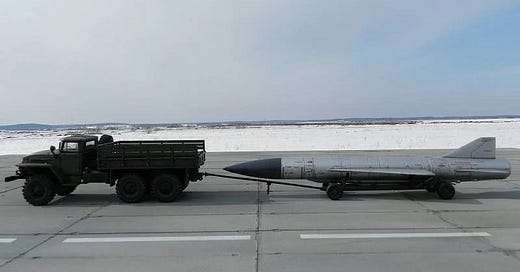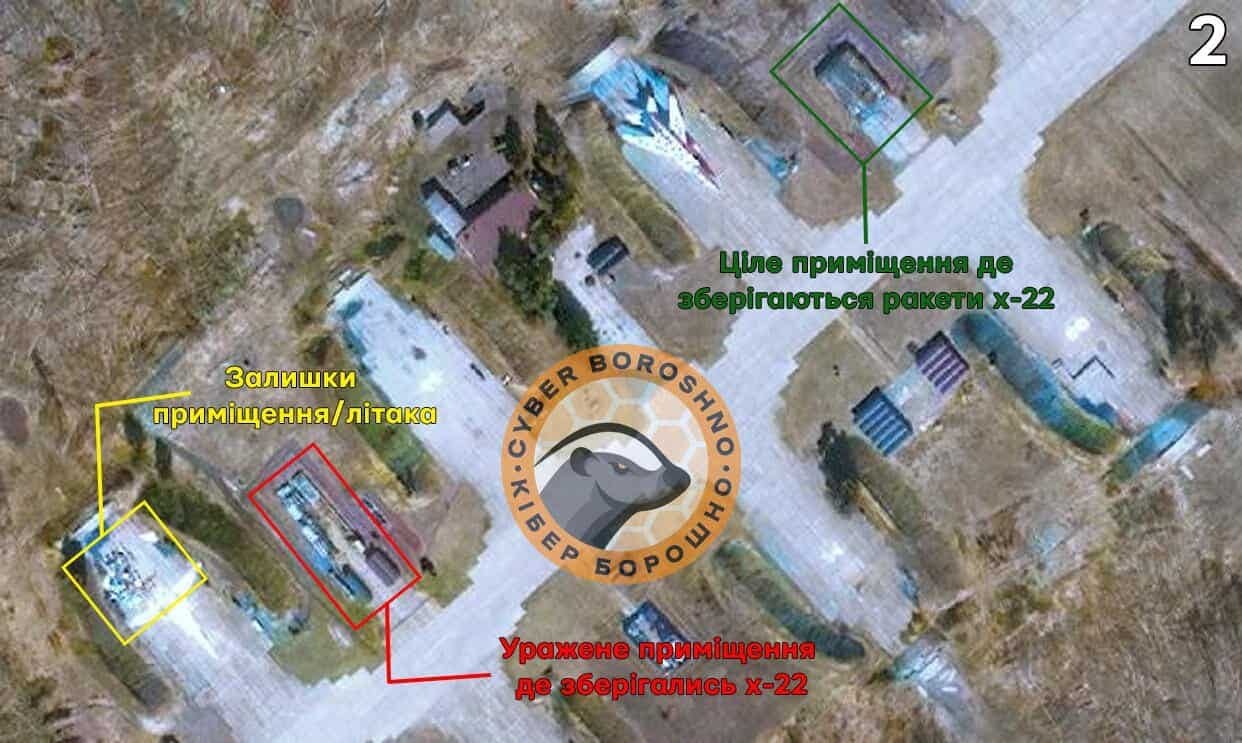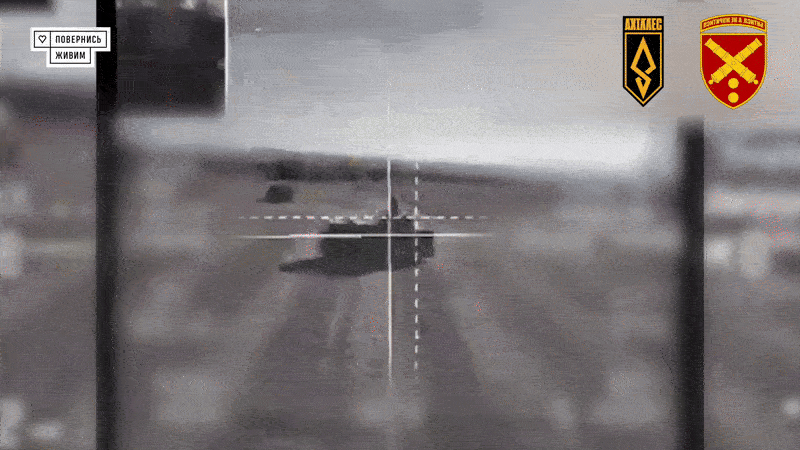Russia's Kh-22 Missiles Are 6-Ton Tubes Full of Acid. Ukraine Is Flinging Explosive Drones at Them.
A March 31 drone raid targeted Kh-22s at a bomber base in western Russia.
Struggling to intercept Russian cruise missiles close to their targets owing to a shortage of long-range air-defenses, Ukrainian forces are aiming “left of the boom”—and going after the Russian air force’s bombers, and their missiles, at bases inside Russia.
On March 31, Ukrainian attack drones motored 140 miles into western Russia and struck the air base in Shaikovka, where Tupolev Tu-22M bombers stage for sorties lobbing Kh-22 cruise missiles at Ukrainian cities. A Russian missile raid on April 4 blew up a playground in Kryvyi Rih, killing 20 people including nine children.
It’s apparent the Ukrainian drone operators meant to blow up the Kh-22s in Shaikovka. “As a result of the attack, a technical room for servicing and preparing missiles before launch was destroyed, and another was damaged by shrapnel,” the analysts at CyberBoroshno concluded after scrutinizing satellite imagery.
A storage building for Kh-22s was also hit, according to CyberBoroshno. “The result of the attack was the disabling of the airfield infrastructure, as well as the destruction of a number of missiles, which could have canceled Russia’s plans for another act of terror against civilians.”
Left of boom
The March 31 attack was just one in a series of raids targeting Russian bomber infrastructure. A triple-tap series of attacks between January and March targeting Engels air base in southern Russia, 400 miles from Ukraine, destroyed a huge stock of bomber-launched cruise missiles costing nearly $1 billion.
For the Ukrainians, it was proverbial icing on the explosive cake when a Tu-22M crashed in Usolsky District, in eastern Russia 2,700 miles from Ukraine, on April 2. It was probably the fifth of the 139-foot, four-person bombers Russia has lost in the 38 months since it widened its war on Ukraine.
It’s worth noting how vulnerable the Tu-22M’s six-ton Kh-22 missile is to shrapnel damage. “The Kh-22 has a liquid-propellant rocket engine, for which the rocket's tanks must be filled with 3,000 liters of extremely toxic fuel, the main components of which are asymmetric heptyl and concentrated nitric acid,” Globalsecurity.org noted.
Merely carrying a 1960s-vintage Kh-22 can be dangerous. “Nothing says fun like flying around with an ancient missile containing [around] four tons of hypergolic fuel,” aviation expert Bill Sweetman quipped.
Read more:
Ukraine's Seth Drone Patiently Waited For a Russian Air-Defense Vehicle to Appear—And Then Attacked
Hoping to peel away the short-range air-defenses defending Russian regiments in eastern Ukraine, a Ukrainian artillery brigade teamed up with a drone regiment—and deployed Ukraine’s newest attack drone, an autonomous loitering munition named Seth.







